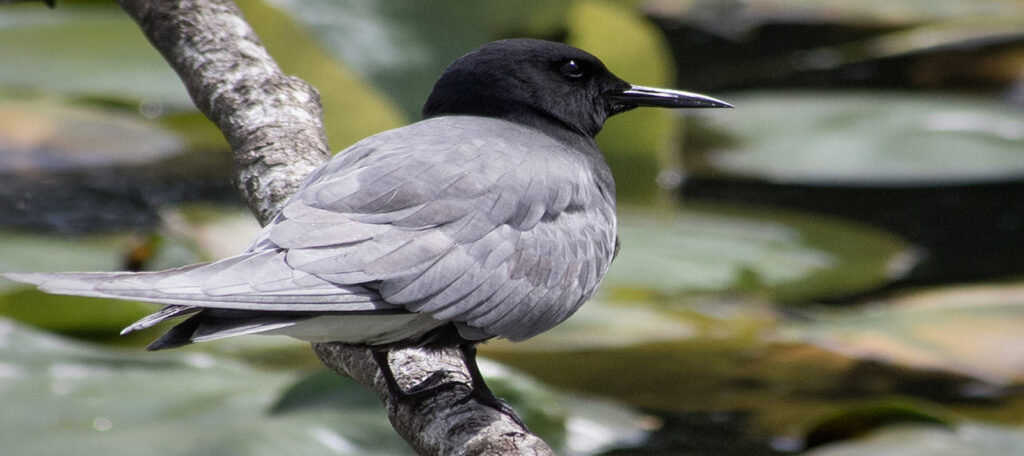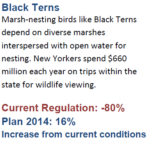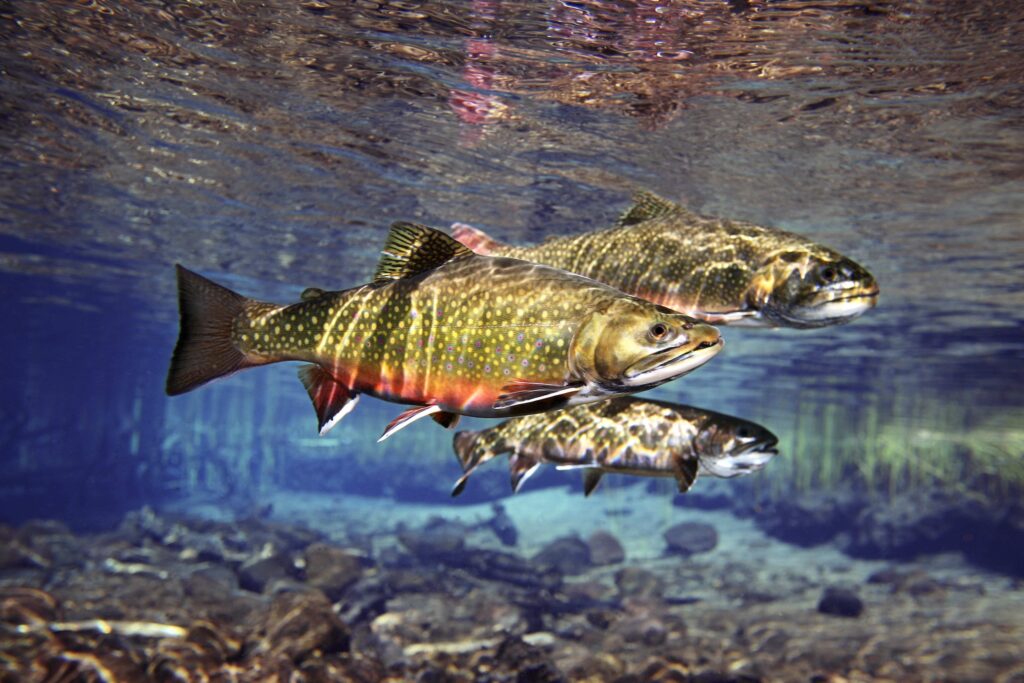Plan 2014 and the Black Tern
Black Terns and other important bird species have been negatively impacted by the management of the St. Lawrence River. Implementation of Plan 2014 would support the recovery of these species.

Guest post by Erin Crotty is a part of our America’s Most Endangered Rivers® series spotlighting the St. Lawrence River.
In 2012, Audubon New York, the state program of the National Audubon Society representing 27 local Chapters and 50,000 members in New York State, submitted comments from 554 people from Audubon’s network to the International Joint Commission in support of Plan 2014. Audubon New York continues to be fully supportive of Plan 2014 which achieves a balance of benefits for all interests by simply restoring some of the natural fluctuations in water levels to St. Lawrence River and Lake Ontario. Today, I would like to focus on one element that makes Plan 2014 so important to Audubon— the impact on endangered and threatened bird species.
Marsh-nesting birds like Black Terns depend on diverse marshes interspersed with open water for nesting. Since the current regulation plan was put in place, Black Tern populations have decreased by an unfathomable 80 percent.

Black Tern Statistics
The enactment of Plan 2014 will have enormous benefits and is projected to increase populations of this New York State-listed endangered species by 16 percent.
By restoring the natural flow and fluctuation of water levels, promoting increased wetland diversity, and restoring natural cycles, Plan 2014 will improve habitat quality for other key bird species, including Least Bitterns (a New York State listed threatened species), Virginia Rails, Yellow Rails (a red listed species on the Audubon Watchlist), and King Rails (a New York State threatened species and yellow listed on the Audubon Watchlist).
Furthermore, the restoration provided by Plan 2014 would greatly benefit the economic and cultural identity of upstate New York and the entire Great Lakes region as New Yorkers spend $660 million each year on trips within the state for wildlife viewing. As many efforts are being made to address the serious declines of these important bird species, implementing Plan 2014 now would be an important, cost-effective step toward their conservation goals.
To ensure these significant investments are not wasted and balance is restored to the regulation of water levels, Audubon New York strongly urges Secretary Kerry and Minister Dion to implement Plan 2104 without further delay.

Erin Crotty is the Executive Director of Audubon New York. Audubon New York is the state’s leading voice for the conservation and protection of natural resources for birds. Integrating science, conservation, policy and education, Audubon’s mission is to conserve and restore natural ecosystems, focusing on birds, other wildlife, and their habitats for the benefit of humanity and the earth’s biological diversity.



